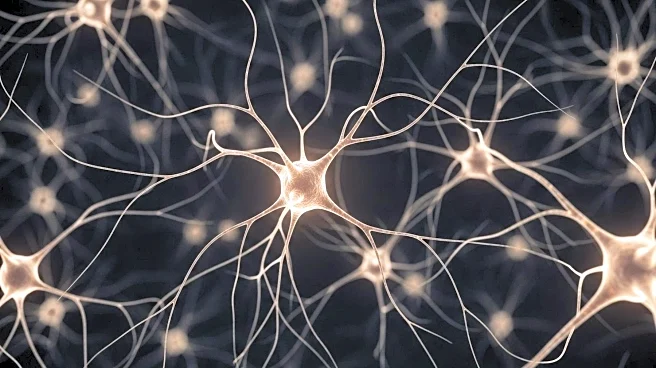What's Happening?
A recent study published in Nature introduces new computational models to explain neural responses in the auditory system. The research focuses on converting sound stimuli into time-varying firing rates that predict electrophysiological measurements in auditory areas. The study presents a novel Transformer-based architecture and a fully recurrent model called StateNet. These models aim to improve the understanding of auditory neural responses by using various datasets and mathematical frameworks. The research highlights the use of spectrogram-like representations to mimic cochlear processing and employs different computational models, including Linear, Linear-Nonlinear, Network Receptive Field, Dynamic Network, and deep 2D-CNN models. The study also explores the use of population coding paradigms to predict neural activity across multiple units, enhancing model robustness and reducing overfitting.
Why It's Important?
This study is significant as it advances the understanding of auditory neural responses, which can have broad implications for neuroscience and auditory processing technologies. By introducing novel models like the Transformer-based architecture and StateNet, the research offers new methods for predicting neural activity, potentially improving auditory prosthetics and hearing aids. The use of population coding paradigms could lead to more efficient models, reducing computational complexity and training time. These advancements may benefit industries focused on auditory technology and contribute to the development of more accurate models for auditory processing, impacting both scientific research and practical applications in auditory health.
What's Next?
The study suggests further exploration of the Transformer-based architecture and StateNet models in different auditory contexts. Future research may focus on refining these models to enhance their predictive accuracy and applicability across various auditory datasets. The potential for these models to be applied in real-world auditory processing technologies, such as hearing aids and auditory prosthetics, could be explored. Additionally, the study opens avenues for investigating the use of these models in other sensory systems, potentially broadening their impact beyond auditory processing.
Beyond the Headlines
The introduction of these novel models may lead to ethical considerations regarding the use of advanced computational techniques in neuroscience. As these models become more integrated into auditory processing technologies, questions about data privacy and the ethical use of neural data may arise. Furthermore, the study's focus on population coding paradigms could influence long-term shifts in how neural responses are modeled, potentially impacting the development of artificial intelligence systems that mimic human sensory processing.










